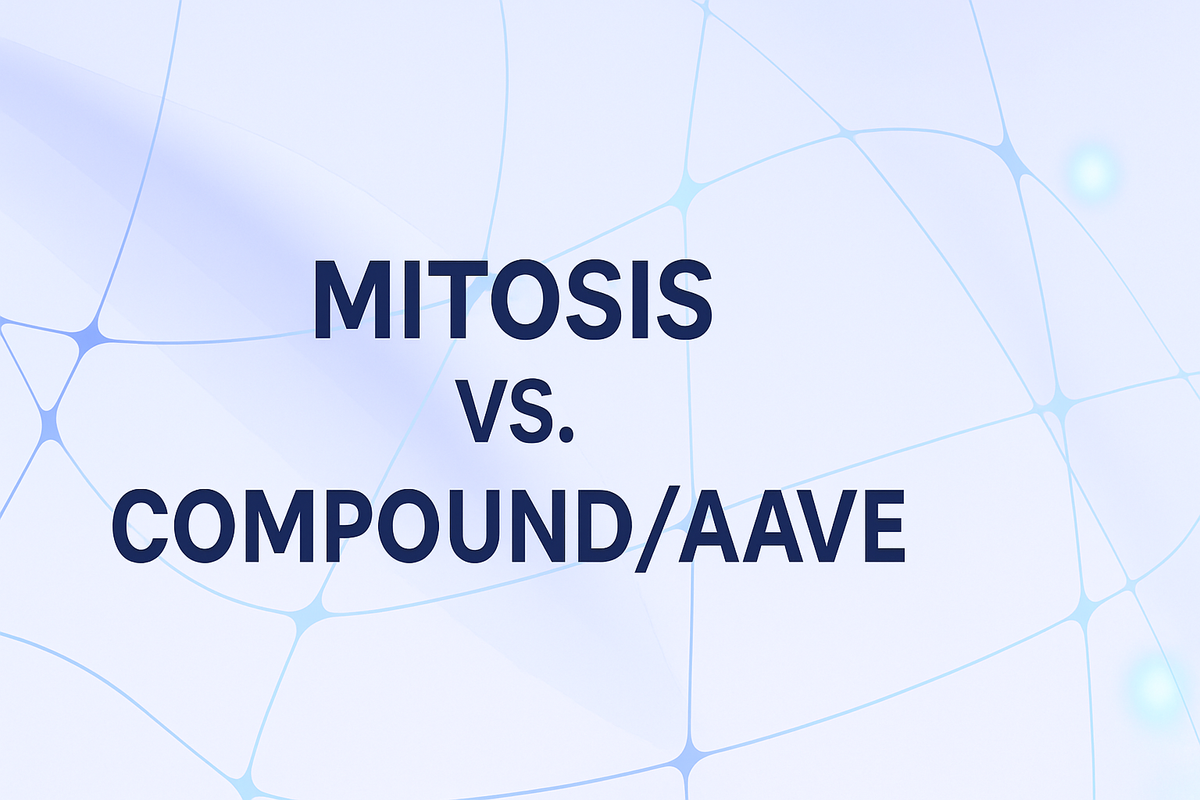Mitosis vs. Compound/Aave: Collateralized Lending vs. Programmable Assets

Introduction
DeFi today is packed with innovation, but it's not all created equal.
Two major powerhouses are shaping how assets move and grow: lending protocols like Compound and Aave, and programmable liquidity systems like Mitosis. At first glance, they might look similar,you deposit assets, earn yield, and interact with smart contracts. But look closer, and you'll realize they’re playing entirely different games.
Today, let’s dive deep into how Mitosis differs from traditional lending giants like Compound and Aave, why programmable liquidity is the next big wave, and what it means for your DeFi strategy.
What is Collateralized Lending (Compound/Aave)?
Platforms like Compound and Aave run on a simple, powerful idea:
- You deposit assets (like ETH, USDC, etc.)
- You earn passive interest while borrowers use your deposits as loans, secured by overcollateralization.
Advantages:
- Passive yield with minimal effort
- Established safety practices (liquidation mechanisms)
- Simple to understand and use
Disadvantages:
- Assets get locked and underutilized
- Yields can fluctuate heavily
- Very little control over how your liquidity is used
When you deposit into Aave, you're basically handing your asset to a robot banker who says, "I'll lend this out safely — but that's all you can do with it."
What is Programmable Liquidity (Mitosis)?
Here’s what happens with Mitosis:
- You deposit assets into Mitosis Vaults
- You mint Vanilla Assets (vAssets) — your ticket into a flexible, programmable world
- You supply those vAssets into yield campaigns (Matrix or EOL)
- You receive tokenized LP positions (miAssets/maAssets)
- Your assets remain liquid, tradable, and composable across DeFi applications
Advantages:
- Assets work in multiple ways simultaneously (earn, trade, collateralize)
- Programmed for custom strategies (risk-optimized, yield-maximized)
- Create derivatives like Yield Tokens and Principal Tokens
Disadvantages:
- Slightly more complexity for beginners
- Relies on ecosystem growth for full programmability benefits
Mitosis doesn't just lend your assets out. It transforms your position into a programmable Lego block for DeFi innovation.
Visualizing the Big Difference
Here’s a simple view:
Compound / Aave (Traditional Lending)
-------------------------------------Deposit Asset
↓Asset Locked as Collateral
↓Earn Passive Interest
↓Minimal Asset Control
Mitosis (Programmable Liquidity)
---------------------------------Deposit Asset
↓Mint Vanilla Asset (vAsset)
↓Supply to Matrix/EOL Campaign
↓Receive Liquid miAsset/maAsset
↓Tokenize Yield + Principal
↓Trade, Collateralize, Stake, or Optimize Position
Notice: In Mitosis, your asset never sits idle — it moves, earns, and evolves.
Real-World Example: ETH Deposit
| Action | Compound/Aave | Mitosis |
|---|---|---|
| Deposit ETH | Locked for borrowing | Mint vETH |
| Use Case | Only passive lending | Supply, trade, optimize |
| Asset Flexibility | Very limited | Extremely flexible (LP tokens, trading, indices) |
| Advanced Products | No native support | Yield tokenization, liquidity indices, programmable portfolios |
Conclusion
Compound and Aave built the essential foundations of DeFi: safe, collateralized lending. But Mitosis is building something much bigger, an entire liquidity capital market where assets flow intelligently, yield optimally, and move freely across the ecosystem.
Instead of parking your capital and praying for yield, Mitosis empowers you to program your liquidity like a pro, boosting returns, managing risks, and opening new strategy dimensions.
In essence?
Compound and Aave taught DeFi how to save.
Mitosis is teaching DeFi how to build.
The future of liquidity isn’t just lending — it’s programmable assets. And Mitosis is leading the charge.


Comments ()